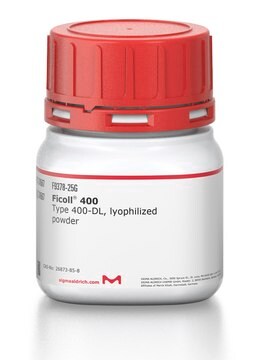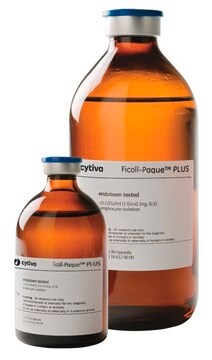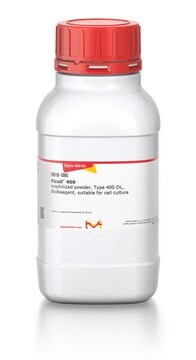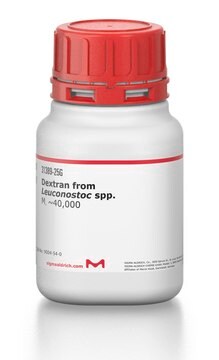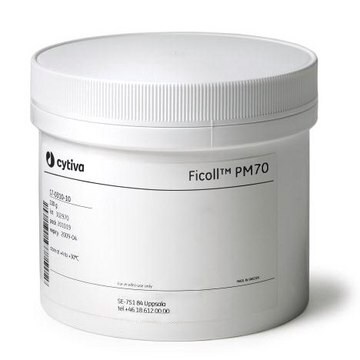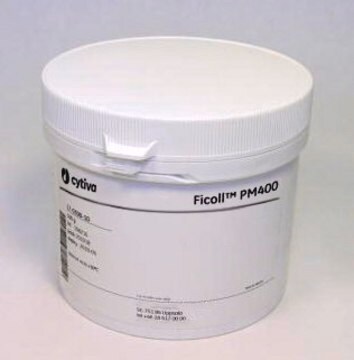F2878
Ficoll® PM 70
Type 70
Synonym(s):
Poly(sucrose-co-epichlorhydrin)
About This Item
Recommended Products
type
Type 70
Quality Level
form
powder
mol wt
~70,000
color
white
solubility
H2O: soluble 100 mg/mL, clear to slightly hazy, colorless to faintly yellow
Looking for similar products? Visit Product Comparison Guide
General description
Application
- as a macromolecule in a comparative study to evaluate its effect in vitrification solutions
- as a supplement in the vitrification solution for the vitrification procedure of oocytes
- as a component of low serum medium for human lung fibroblast cell culture to promote a crowded environment
Biochem/physiol Actions
Other Notes
Legal Information
Storage Class
11 - Combustible Solids
wgk_germany
WGK 3
flash_point_f
Not applicable
flash_point_c
Not applicable
ppe
Eyeshields, Gloves, type N95 (US)
Certificates of Analysis (COA)
Search for Certificates of Analysis (COA) by entering the products Lot/Batch Number. Lot and Batch Numbers can be found on a product’s label following the words ‘Lot’ or ‘Batch’.
Already Own This Product?
Find documentation for the products that you have recently purchased in the Document Library.
Customers Also Viewed
Protocols
Ficoll 400® is a highly branched polymer formed by the copolymerization of sucrose and epichlorohydrin. Ficoll 400® is completely non-ionic. Because of the abundance of hydroxyl groups, Ficoll 400® is very hydrophilic and extremely water-soluble.
Our team of scientists has experience in all areas of research including Life Science, Material Science, Chemical Synthesis, Chromatography, Analytical and many others.
Contact Technical Service


